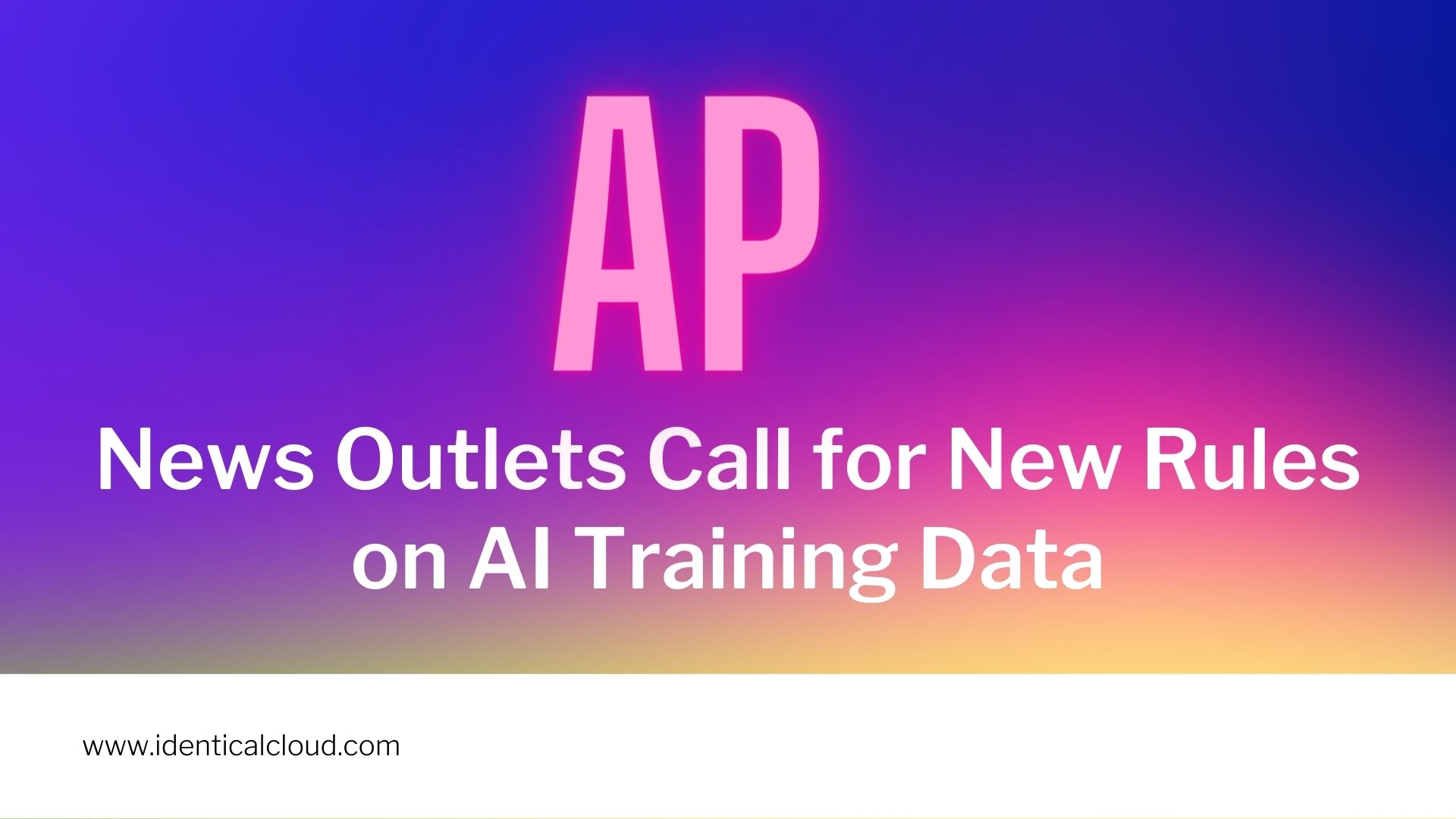
News Outlets Call for New Rules on AI Training Data
News Outlets Call for New Rules on AI Training Data
News outlets are calling for new rules on AI training data, arguing that the current system is biased and inaccurate, which can lead to AI systems that discriminate against certain groups of people or produce inaccurate results.
AI training data is the data that is used to train AI systems. It is essential for the accuracy and fairness of AI systems that the training data is representative of the real world and that it is free of bias. However, many news outlets say that the current system of collecting and curating AI training data is flawed.
One of the main problems with the current system is that it is often biased. This is because the data is often collected from a small number of sources, which can lead to a narrow and skewed view of the world. For example, if an AI system is trained on a dataset of news articles that are all written by white men, the system is likely to be biased against women and people of color.
Another problem with the current system is that it is often inaccurate. This is because the data is often not properly cleaned or curated, which can lead to errors and omissions. For example, if an AI system is trained on a dataset of news articles that contain typos or factual errors, the system is likely to produce inaccurate results.
News outlets say that new regulations are needed to address these problems. These regulations should require AI training data to be more representative of the real world and to be subject to more rigorous quality control standards. This would help to ensure that AI systems are more fair and accurate, and that they do not perpetuate harmful biases.
Challenges with Current Training Data:
1. Bias Amplification:
AI systems can inadvertently amplify biases present in the training data, leading to the dissemination of biased and potentially harmful information.
2. Misinformation Propagation:
If training data includes misinformation or false narratives, AI models can unknowingly perpetuate and amplify such inaccuracies.
3. Lack of Accountability:
The opacity of AI algorithms and their training data can make it challenging to hold developers and AI systems accountable for the information they generate.
4. Quality Control:
Ensuring the accuracy and reliability of AI-generated content requires robust mechanisms for vetting and validating training data.
Proposed Solutions and New Rules:
1. Diverse and Representative Data:
News outlets advocate for using diverse and representative training data to mitigate biases and ensure that AI systems produce content that reflects a wide range of perspectives.
2. Transparency and Explainability:
Developers should be transparent about the sources and types of training data used, enabling users to understand how AI models generate content.
3. Fact-Checking and Validation:
Implementing fact-checking and validation mechanisms during the training data curation process can help ensure the accuracy of AI-generated content.
4. Regular Audits and Updates:
AI systems should undergo regular audits of their training data to identify and rectify any biases or inaccuracies that may arise over time.
Implications for Ethical AI News Delivery:
1. Reliable and Unbiased Content:
Implementing new rules on AI training data can lead to the creation of AI systems that consistently generate reliable, unbiased, and accurate news content.
2. Enhanced Public Trust:
Ethical AI practices in news delivery can bolster public trust in the information disseminated by AI-powered systems.
3. Responsible Journalism:
By advocating for ethical AI, news outlets contribute to responsible journalism in the digital age, upholding their role as gatekeepers of accurate and ethical information.
4. Mitigating Disinformation:
Robust training data guidelines can help mitigate the spread of disinformation and fake news, promoting a healthier information ecosystem.
News outlets’ call for new rules on AI training data marks a pivotal moment in the evolution of AI-powered information dissemination. By demanding transparency, accountability, and accuracy in AI systems, news outlets are championing the responsible development of AI technologies. As we navigate the uncharted territory of AI-driven news, these proposed guidelines serve as a guiding light, ensuring that the AI-powered future remains aligned with the principles of ethical journalism, accurate reporting, and the dissemination of reliable information. Through collaborative efforts between news outlets, developers, and the wider public, we have the opportunity to shape a future where AI systems are trusted allies in our quest for knowledge, understanding, and informed decision-making.
